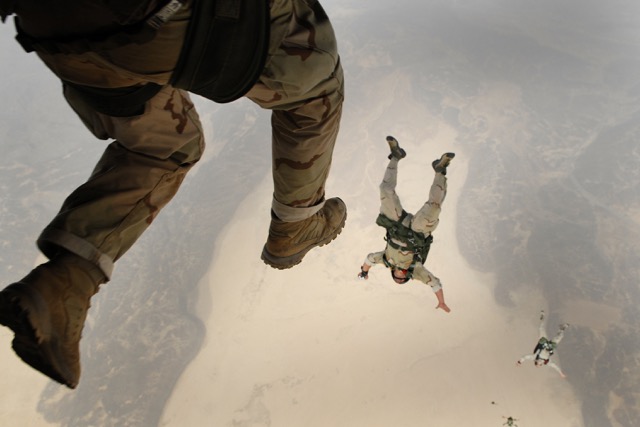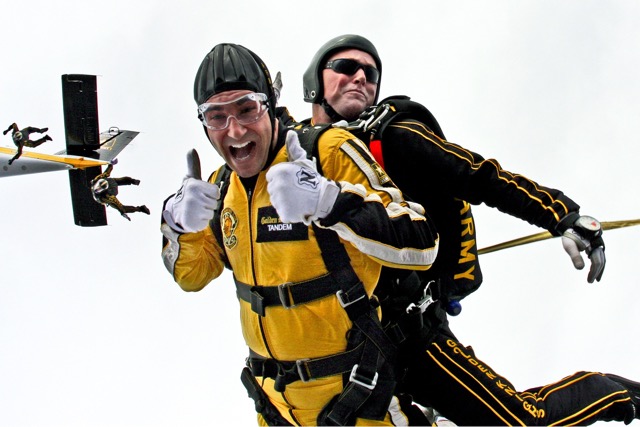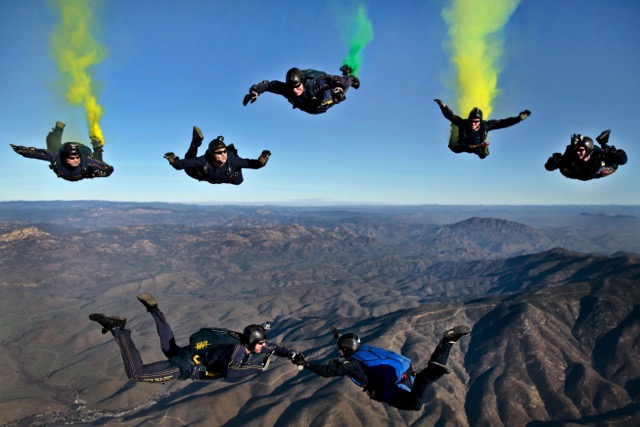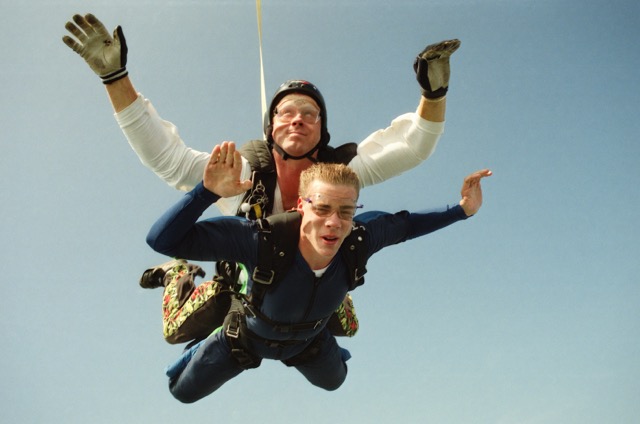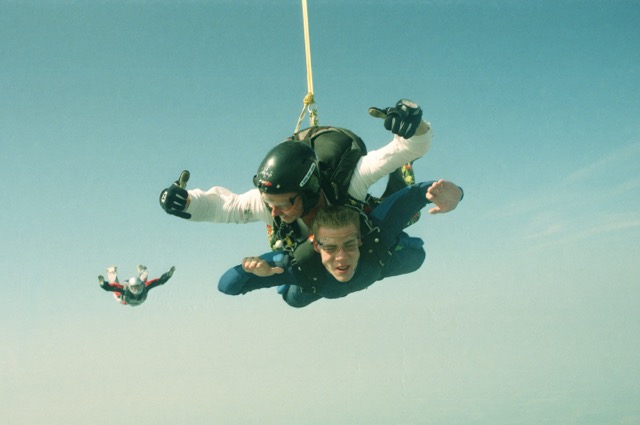Today, we are diving into the thrilling world of skydiving and the burning questions that often pop up in the minds of adventure seekers like you. We understand that safety is paramount when it comes to taking the leap from a perfectly good airplane, so we’re here to address your concerns and shed some light on the matter. We will explore the safety of skydiving, discuss the various forms of this exhilarating sport, examine the failure rate of skydiving parachutes, and touch upon the level of comfort you can expect during your skydiving experience. So, grab a hot beverage, buckle up, and get ready to unravel the excitement and safety precautions that come with this adrenaline-pumping endeavor.
Introduction
Skydiving is an exhilarating and adrenaline-filled sport that has gained popularity over the years. However, one question that is frequently asked by many people is, “Is skydiving safe?” It’s natural to have concerns about the safety of an activity that involves jumping out of a perfectly good airplane. We will delve into the topic of skydiving safety and explore the measures taken to ensure the well-being of skydivers.
First and foremost, it’s essential to acknowledge that skydiving is an extreme sport, and like any other extreme sport, it comes with inherent risks. However, with proper training, modern equipment, and strict safety protocols, skydiving has become considerably safer over the years. The skydiving industry heavily emphasizes safety and prioritizes the well-being of every participant.
One critical aspect of skydiving safety is training. Before making their first solo jump, aspiring skydivers are required to undergo extensive training, typically through a program called the Accelerated Freefall (AFF). During the AFF program, individuals learn essential skills, such as proper body positioning, emergency procedures, and canopy control. The training helps prepare skydivers for various scenarios they may encounter in the air, ensuring that they are equipped to handle them safely.
- Skydiving equipment, particularly parachutes, also play a vital role in ensuring safety. Modern parachutes are meticulously designed and rigorously tested to withstand the stresses of skydiving. It’s important to note that parachutes are regularly inspected, maintained, and replaced when necessary to ensure optimal performance.
- Furthermore, skydiving centers have strict safety protocols and guidelines in place. All equipment, including parachutes, harnesses, and helmets, undergoes regular inspections by certified professionals. Skydiving centers also adhere to Federal Aviation Administration (FAA) regulations and guidelines, which provide further assurance of safety standards.
While skydiving is undeniably an adrenaline rush, it’s crucial to understand that the risks associated with it are mitigated through comprehensive training, advanced equipment, and stringent safety measures. Ultimately, every individual must assess their own comfort level and make an informed decision about whether skydiving is the right activity for them. Remember, safety should always be a top priority, and by choosing a reputable skydiving center and following the instructions of experienced instructors, skydiving can be a thrilling adventure that is enjoyed safely.
What Is the Safest Form of Skydiving?
Skydiving is an exhilarating sport that allows individuals to experience the thrill of freefalling through the sky. However, as with any adventure activity, safety is always a concern. Many people wonder what the safest form of skydiving is, and today, we will explore this topic.
There are several types of skydiving, including tandem skydiving, static line skydiving, and accelerated freefall (AFF). Each method has its own benefits and risks, but when it comes to safety, tandem skydiving is considered the safest form.
Tandem skydiving involves jumping with an experienced instructor who is responsible for deploying the parachute and ensuring a safe landing. This method allows first-time skydivers to enjoy the experience without needing extensive training. The instructor takes care of all the technical aspects, allowing the participant to simply enjoy the adrenaline rush.
Benefits of tandem skydiving:
-
- Enhanced safety: Since a professional instructor guides the entire process, the risk of any mishap is significantly reduced.
- Easy and accessible: Tandem skydiving requires minimal training, making it accessible to people of varying fitness levels and ages.
- Peace of mind: Having an experienced instructor by your side can alleviate any fears or concerns, giving you peace of mind during your jump.
While tandem skydiving is the safest form, it is important to note that skydiving itself carries inherent risks. Despite precautionary measures, accidents can happen. However, the sport is regulated, and skydiving centers adhere to strict safety protocols to minimize any potential dangers.
The key to a safe skydiving experience lies in choosing a reputable skydiving center with qualified instructors and well-maintained equipment. Ensure that the center has a history of safety and follows industry standards. Prioritize safety over cost or convenience when selecting a skydiving provider.
What Is the Failure Rate of Skydiving Parachutes?
Skydiving is an exhilarating and extreme sport that has gained popularity in recent years. As with any high-risk activity, it is important to understand and evaluate the safety measures in place, including the failure rate of skydiving parachutes. Parachutes are the lifelines of skydivers, enabling them to descend safely from thousands of feet in the air. But how reliable are these parachutes? Let’s delve into the failure rate and examine the factors that affect it.
Understanding the Failure Rate: The failure rate of skydiving parachutes refers to the probability of a parachute malfunction during a skydiving jump. This rate is typically stated as a percentage and is based on various factors such as parachute design, maintenance, and usage. It is crucial to note that modern skydiving parachutes undergo rigorous testing and manufacturing processes to ensure a high level of reliability. However, like any man-made equipment, parachutes are not exempt from occasional failures.
Factors Affecting Parachute Failure: Several factors can contribute to the failure rate of skydiving parachutes. One significant factor is the age and condition of the parachute. Parachutes have a limited lifespan and require routine inspections and maintenance to ensure their optimal performance. Inadequate maintenance or using outdated parachutes can increase the chances of failure. Other factors include deployment errors, improper packing, and environmental conditions like strong winds or heavy rain.
Statistical Data on Parachute Failures: Obtaining specific and up-to-date statistics on the failure rate of skydiving parachutes can be challenging, as the data is often proprietary and not publicly available. Additionally, manufacturers and skydiving organizations may have different reporting methods, making it difficult to obtain a comprehensive overview. However, it is essential to acknowledge that significant advancements have been made in parachute technology, resulting in a relatively low failure rate in modern parachutes.
Is It Uncomfortable to Skydive?
When it comes to the thrilling adventure of skydiving, one of the common concerns that many people have is whether it is uncomfortable. After all, jumping out of a perfectly good airplane and hurtling towards the earth at tremendous speed can seem quite daunting. However, the reality is that skydiving is a remarkably comfortable experience for most individuals.
First and foremost, it is important to understand that modern skydiving equipment and technology have come a long way in ensuring maximum comfort and safety for the participants. The main discomfort that people associate with skydiving is the sensation of freefall and the pressure exerted on the body during the initial descent.
However, once the parachute is deployed, the experience becomes much more serene and comfortable. The sudden deceleration is gradual and controlled, allowing the body to adjust to the change in speed. The feeling of weightlessness is replaced by a sense of peaceful gliding as you float through the sky.
- Additionally, skydiving gear is designed with comfort in mind. The jumpsuits are lightweight and flexible, allowing for ease of movement during freefall and landing. The harnesses are adjustable to fit snugly and comfortably, ensuring that you feel secure throughout the entire experience.
- Moreover, modern parachutes are meticulously engineered to provide a gentle and smooth descent. The canopies are designed to open gradually, minimizing the jolt that can be associated with the sudden slowing down of speed. This ensures that the transition from freefall to parachute flight is as comfortable as possible.
- Furthermore, professional skydiving instructors play a crucial role in ensuring the comfort of their students. They are highly experienced and knowledgeable, guiding you through every step of the process and ensuring that you feel safe and at ease throughout the entire skydiving excursion.
In conclusion, skydiving might seem intimidating and uncomfortable at first glance, but in reality, it is an incredibly thrilling and surprisingly comfortable experience. The advancements in equipment technology, the design of the gear, and the expertise of professional instructors all contribute to ensuring that participants have a comfortable and enjoyable skydiving adventure. So, if you’ve ever contemplated taking the leap and experiencing the exhilaration of skydiving, rest assured that any initial discomfort will quickly transform into an overwhelmingly positive and unforgettable experience.

